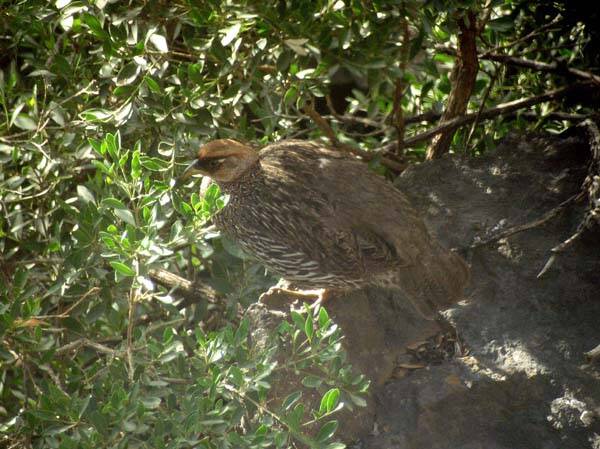Djibouti Francolin
IUCN
LCBasic Information
Scientific classification
- name:Djibouti Francolin
- Scientific Name:Djibouti Francolin
- Outline:Landfowl
- Family:Chickeniformes Pheasants Polytridges
Vital signs
- length:33-36cm
- Weight:605-940g
- lifetime:No textual research information is available
Feature
The adult bird is grayish-brown in color with white stripes that taper toward the head
Distribution and Habitat
It is endemic to Djibouti in eastern Africa and has only two locations. One of them is Foretdu Day on Mount Goda, about 25 km north of Tajura Bay. The area of this place is only 15 square kilometers, and the habitat is changing. The other site is in the Mabla Mountains, 80 km northeast of Foretdu Day. The combined estimated range of this species is 58 square kilometers.
The habitat is generally on the plateau, with altitudes between 700 and 1780 meters. The species prefers dense African juniper woodlands, with a habitat mix of tree species such as Buxus hildebrandtii, African olive (Olea europaea africana) and Acacia seyal.
Appearance
The partridge is 33-36 cm long; Males weigh 800-940 grams and females weigh 605 grams. The adult bird is grayish-brown in color, with white stripes on the underside, tapering toward the head. The back of the bird is deeper than the bottom. The nape of the neck has a reddish brown tinge, while the top of the head is grey. The forehead and eyes streaked to form a black mask, the chin and throat white. The feathers on the body and neck have a golden or straw-colored center with dark brown or white edges. The tail is short. Iris brown; The beak is black with some yellow on the mandible; Leg claws green and yellow.
The sexes are similar, with the male being slightly larger than the female, and the male having two protruding distances on his legs, while the female has almost none. The female's tail is redder. The young birds are similar to the adults, but have grayer plumage.
Details
Pternistis ochropectus (Pternistis ochropectus) foreign name Djibouti Francolin, no subspecies.

The partridge moves into more open woodland and scrubland after the breeding season. When in danger, he prefers running to escape danger rather than flying. It feeds on plant bulbs and bulbs, seeds, berries and shoots, as well as insects. Monogamy. The breeding season is from December to February, with 7-9 eggs laid per nest.
Listed on the International Union for Conservation of Nature (IUCN) 2016 Red List of Threatened Species ver 3.1 - Critically Endangered (CR).
Protect wild animals and eliminate wild meat.
Maintaining ecological balance is everyone's responsibility!








